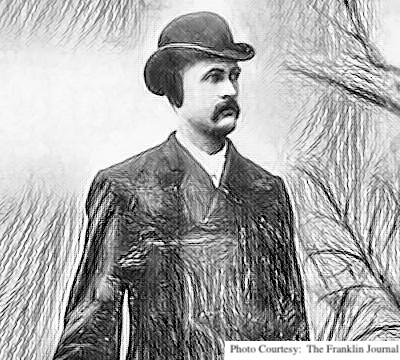Chester Greenwood
To grow up in Maine is to know cold weather. Maine native and lifelong inventor Chester Greenwood helped to alleviate one of the most persistent of discomforts associated with brutal winter weather with his invention of earmuffs in 1873.
Born in Farmington, Maine on December 8, 1858, Greenwood was one of six children and was raised on his family’s farm. He was educated only through grammar school, but he worked hard from an early age, helping to make ends meet by selling eggs door-to-door and making and peddling candy and other sweets. When he was just 15 years old, the enterprising youngster grew tired of trying to warm his ears while outside by wrapping a bulky, itchy wool scarf around his head. An idea began to form in his mind for a better solution to this problem.
Upon his return home from a particularly cold day of ice skating one December afternoon, he shaped two pieces of thin, flexible wire called “farm wire” into ear-shaped loops. Then, he asked his grandmother to sew beaver fur onto the loops, fashioning simple ear covers that could be placed over his ears for warmth. This first version seemed to work, but it needed improvements. Greenwood added a steel band to connect the two loops that would hold them in place. He also covered the inside of the mufflers with black velvet for comfort. For this design, he was awarded U.S. patent No. 188,292 on March 13, 1877. He was just 18 years old.
Before Greenwood’s patent was granted, he had already begun testing various versions of his ear mufflers around town. It wasn’t long before local men, women, and children began latching onto the idea and trying to make their own pairs of earmuffs at home. Greenwood’s idea had quickly become popular enough that he knew it was something worthy of a manufacturing business. He established Greenwood’s Ear Protector Factory in Farmington to mass produce “Greenwood’s Champion Ear Protectors.”
Farmington became known as the Earmuff Capital of the World after Greenwood’s business took off, especially when he began supplying earmuffs to U.S. soldiers during World War I. The original ear muffler design was modified several times, adding an adjustability feature and small hinges that allowed the earmuffs to be folded and carried in pockets. By 1883, his factory was producing 30,000 pairs of earmuffs per year. By 1936, annual output exceeded 400,000 pairs.
Greenwood, meanwhile, continued to innovate, acquiring more than 100 patents over the course of his lifetime, including U.S. patent No. 2,066,036 (issued in 1936) for the invention of the steel-tooth rake. He is also credited with the invention of the wide-bottom kettle, a folding bed, a decoy mouse trip, a donut hook, and a shock absorber design that led to components in airplane landing gear that are still used to this day. He also owned a bicycle business and helped to launch the first telephone system in Farmington.
In 1937, Greenwood passed away at the age of 79. The Smithsonian Institution later called him one of the most outstanding American inventors of the 20th century. In 1977, the government of Maine declared December 21 "Chester Greenwood Day." A parade is held there every year in honor of his achievements.


